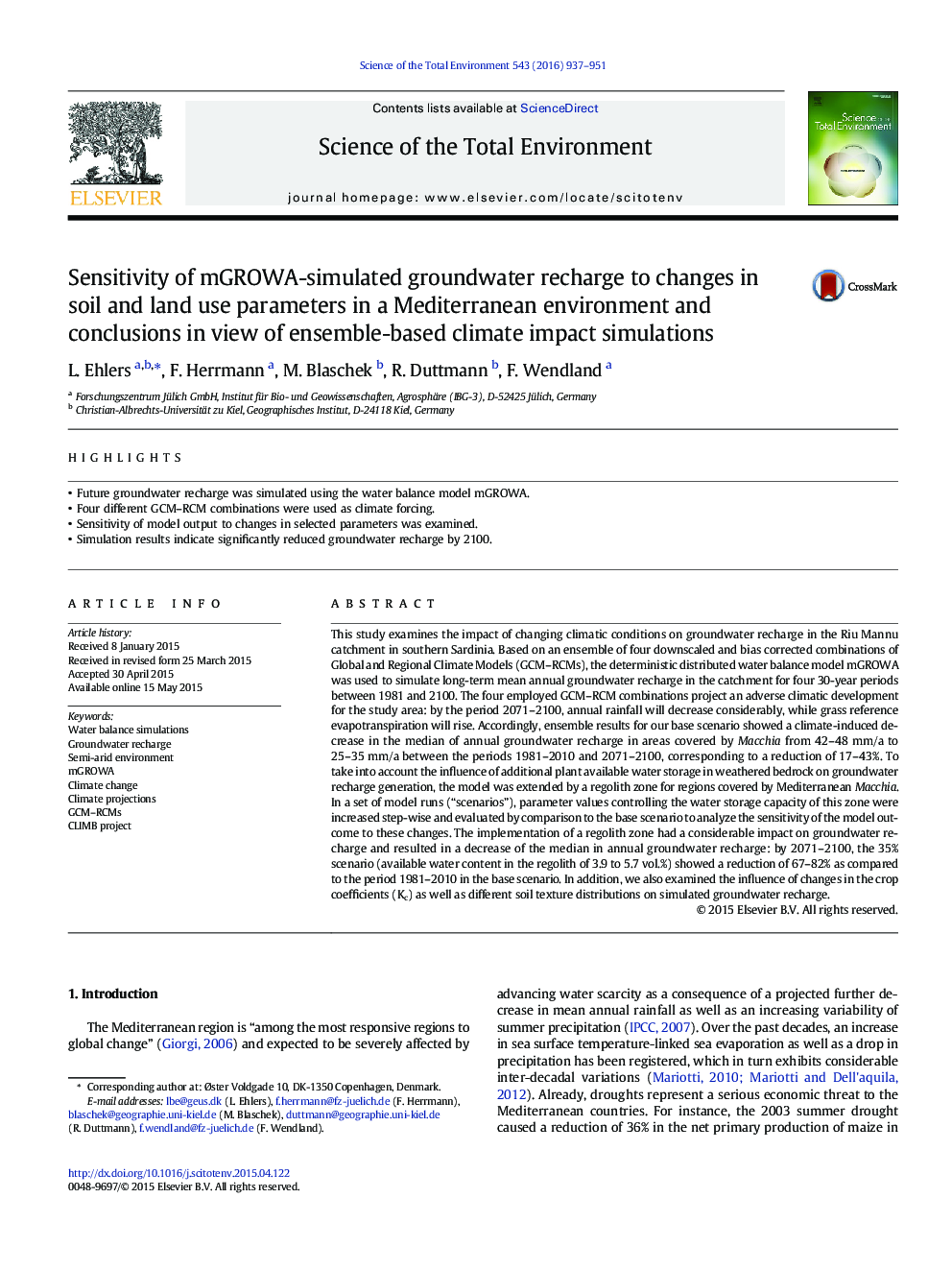| کد مقاله | کد نشریه | سال انتشار | مقاله انگلیسی | نسخه تمام متن |
|---|---|---|---|---|
| 4428315 | 1619739 | 2016 | 15 صفحه PDF | دانلود رایگان |
• Future groundwater recharge was simulated using the water balance model mGROWA.
• Four different GCM–RCM combinations were used as climate forcing.
• Sensitivity of model output to changes in selected parameters was examined.
• Simulation results indicate significantly reduced groundwater recharge by 2100.
This study examines the impact of changing climatic conditions on groundwater recharge in the Riu Mannu catchment in southern Sardinia. Based on an ensemble of four downscaled and bias corrected combinations of Global and Regional Climate Models (GCM–RCMs), the deterministic distributed water balance model mGROWA was used to simulate long-term mean annual groundwater recharge in the catchment for four 30-year periods between 1981 and 2100. The four employed GCM–RCM combinations project an adverse climatic development for the study area: by the period 2071–2100, annual rainfall will decrease considerably, while grass reference evapotranspiration will rise. Accordingly, ensemble results for our base scenario showed a climate-induced decrease in the median of annual groundwater recharge in areas covered by Macchia from 42–48 mm/a to 25–35 mm/a between the periods 1981–2010 and 2071–2100, corresponding to a reduction of 17–43%. To take into account the influence of additional plant available water storage in weathered bedrock on groundwater recharge generation, the model was extended by a regolith zone for regions covered by Mediterranean Macchia. In a set of model runs (“scenarios”), parameter values controlling the water storage capacity of this zone were increased step-wise and evaluated by comparison to the base scenario to analyze the sensitivity of the model outcome to these changes. The implementation of a regolith zone had a considerable impact on groundwater recharge and resulted in a decrease of the median in annual groundwater recharge: by 2071–2100, the 35% scenario (available water content in the regolith of 3.9 to 5.7 vol.%) showed a reduction of 67–82% as compared to the period 1981–2010 in the base scenario. In addition, we also examined the influence of changes in the crop coefficients (Kc) as well as different soil texture distributions on simulated groundwater recharge.
Journal: Science of The Total Environment - Volume 543, Part B, 1 February 2016, Pages 937–951
